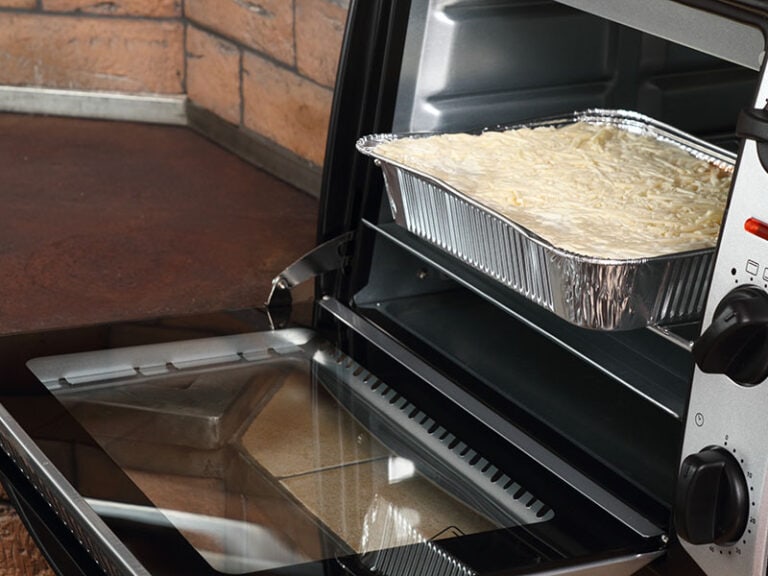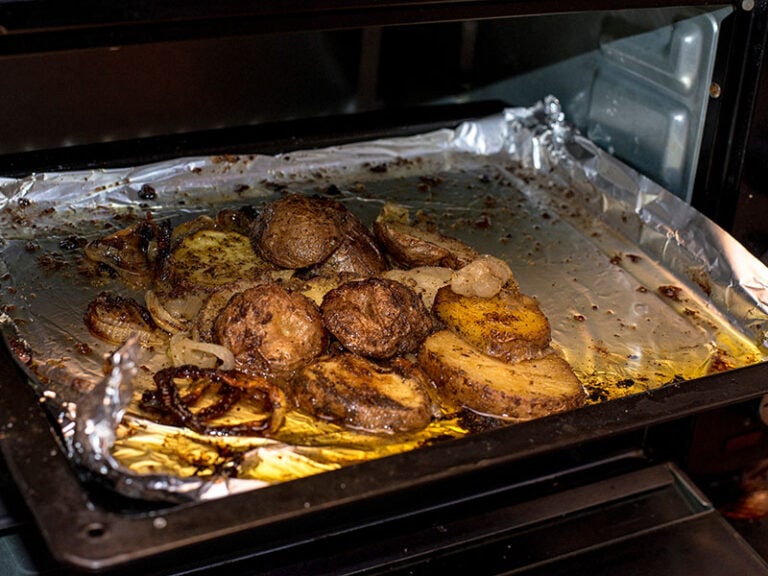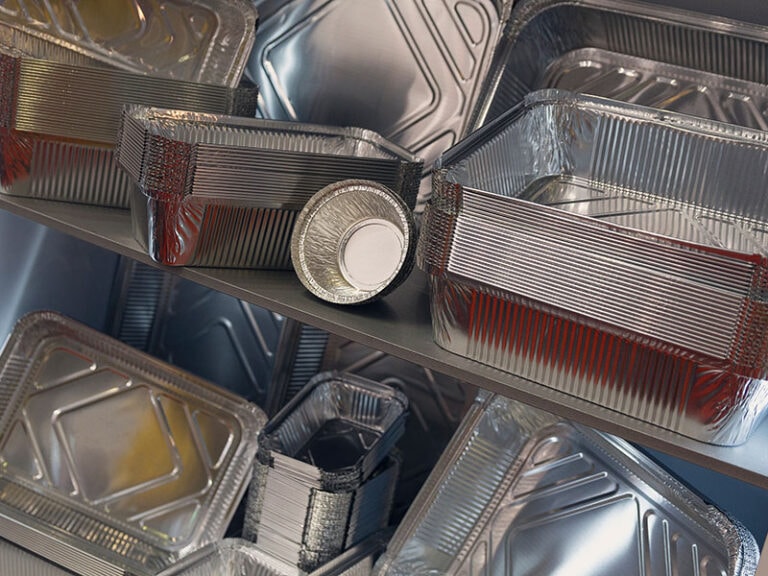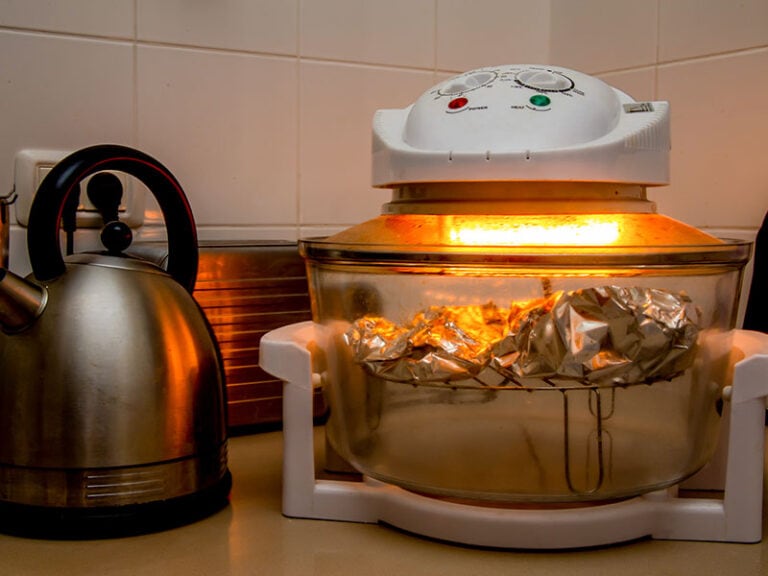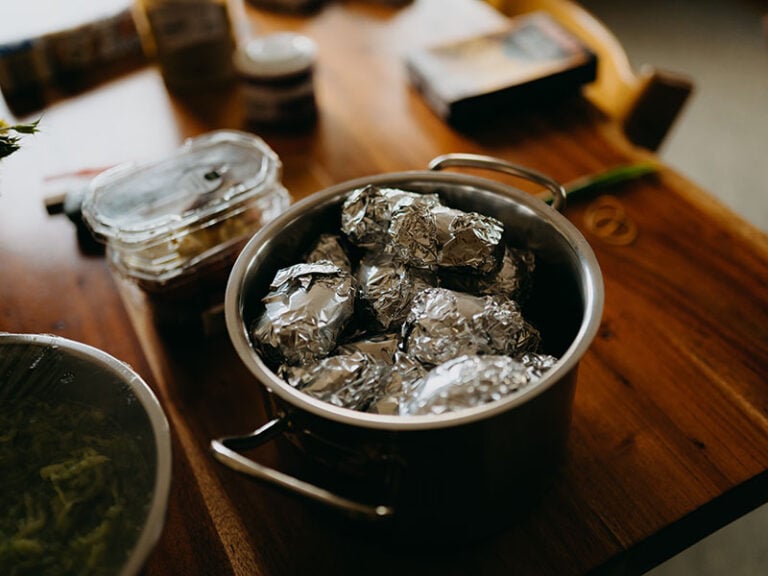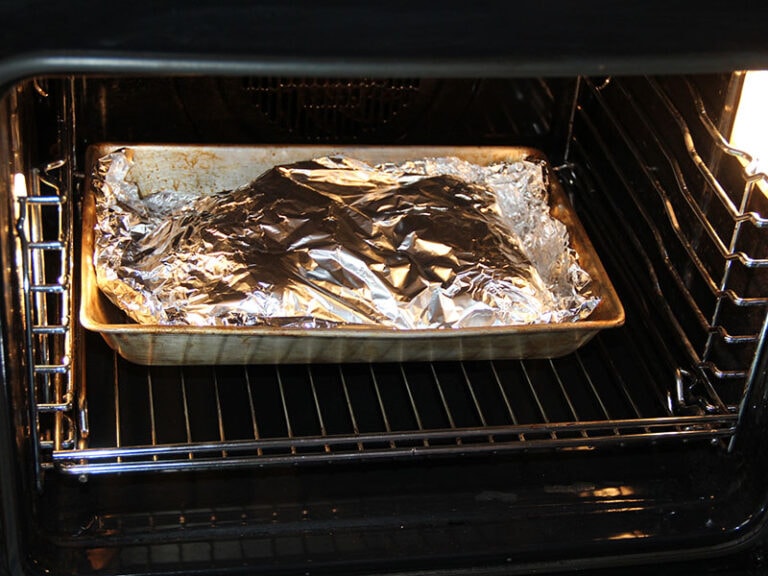Knowing “What does tent with foil mean?” assists in leveling your dishes to a higher state and effectively saves time. It is unbelievable that with just a roll of aluminum foil, you can show off your fantastic cooking skills to your beloved ones in very simple steps.
Fortunately, this article will provide everything you need to know about this brilliant method, and then you can be a Masterchef in your own kitchen.
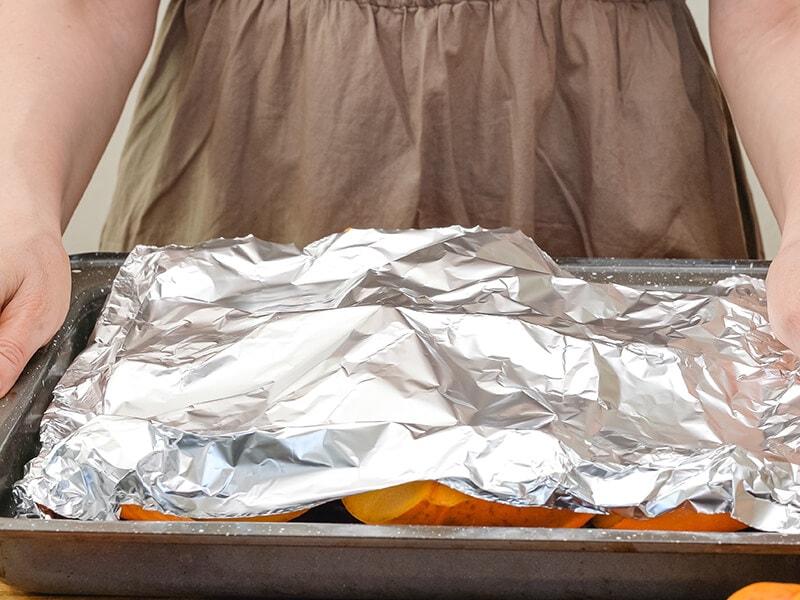
What Is Tent With Foil?
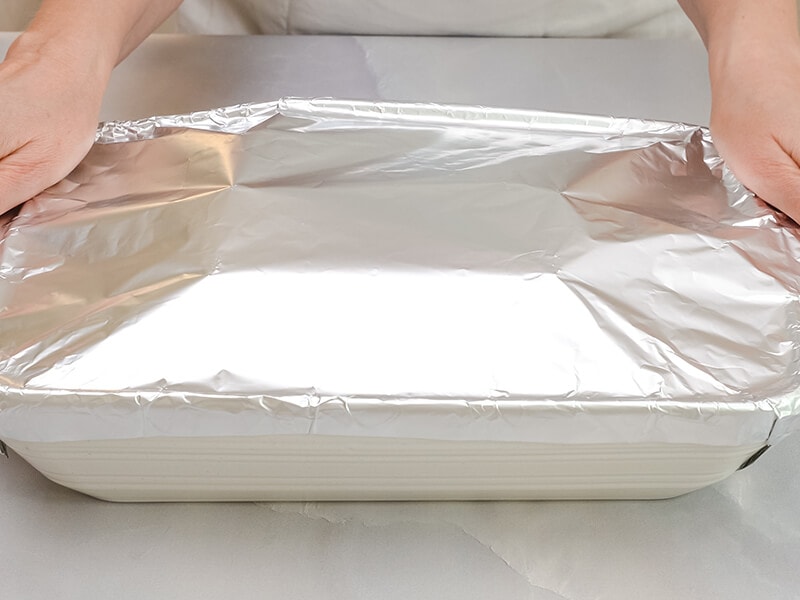
Tent with foil is the method to cover the food you want to cook with the baking pan and foil. Then you need to leave one inch of space over your food and crimp the foil along the edges to secure it to the pan.
This assists in maintaining an even cooking environment by preventing the meat’s exterior from browning too quickly while the interior can’t catch up to the cooking process.
Moreover, it also helps lock the moisture inside your food while cooking, as it can evaporate out of the tent made of foil. In other words, the food inside the foil will be tender and juicy.
Learn the difference between tenting and wrapping food with foil.
Why Should You Tent With Foil?
Before learning how to tent with foil, you need to know the main reasons why you should do that to apply this method correctly in the right situations.
Cooking With Aluminum Foil
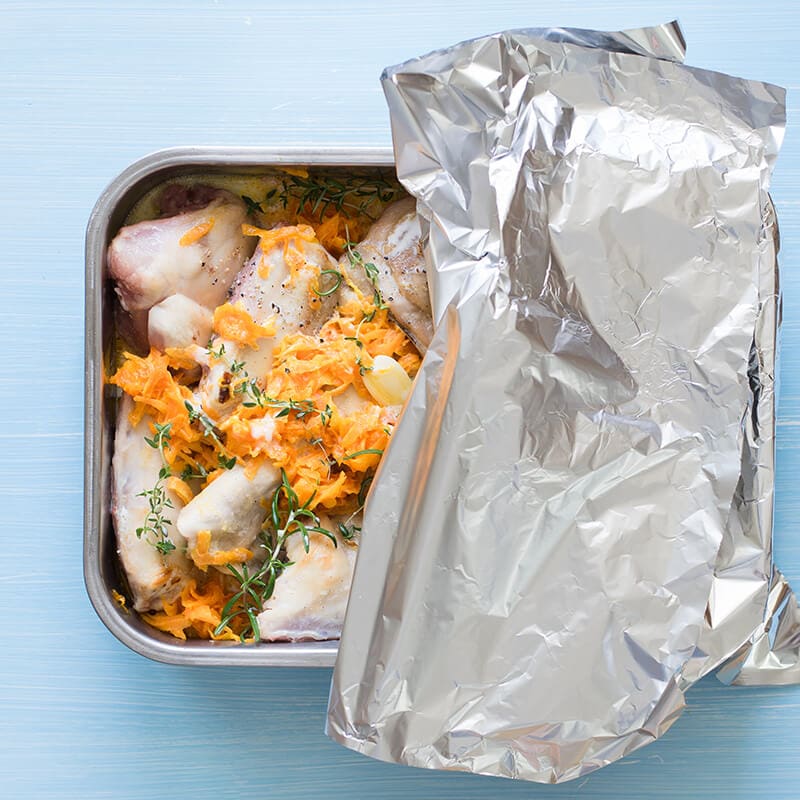
Since aluminum foil is a common item in the market, cooking has become more convenient. Using aluminum foil for cooking has become a typical practice, especially when it comes to baking in the oven.
Because foils can deflect heat directly from the oven away from the surface of the food, it assists your food in cooking at a more even temperature. In addition, aluminum foil can retain moisture in the food, making it juicy during the entire cooking process.
Moreover, tenting your food with aluminum foil before cooking can prevent your dish from being burned under high temperatures and stop the food’s moisture from existing throughout the evaporation.
In addition, aluminum foil can transfer heat faster than any typical metal, costing you less time to cook but enjoying an excellent dish.
How Aluminum Affects Tenting With Foil
Aluminum can help prevent your food from being exposed to heat directly, which could play a decisive role in your proper cooking process (in which you cook the exterior simultaneously with the meat inside).
Consequently, you can get an ideal dish where you cook all sides of the meat uniformly. Another beneficial effect of aluminum in the “tent with foil” method is that it aids in holding the meat’s moisture inside the foil and prevents its evaporation during the cooking process.
Therefore, your dish will be moist, tender, delicious, and evenly cooked.
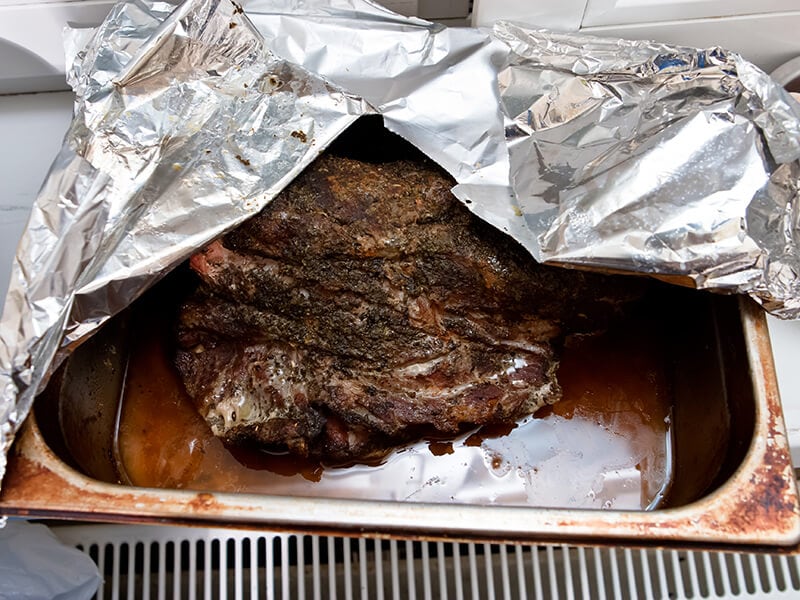
How To Tent Food With Foil
Tenting food with foil is simple, as all you need is high-quality aluminum foil and your favorite food. To make it more straightforward, you can continue to read this post.
Prepare Things You Need
To tent with foil, you’ll need to use a roll of aluminum that you can find easily in any grocery store or market near your place. Next, you need to decide which kitchenware you want to use to contain the dish.
Tenting With Foil
After you have prepared all the necessary things for a tent, here are the things you need to do.
- Step 1: Measure the aluminum foil to fit your pan or baking dish. There should be around an inch of space at the top.
- Step 2: You need to cut the aluminum foil to fit nicely with your pan. Next, you can cover the pan’s surface with aluminum foil. More importantly, you should crimp the foil around the sides of the baking pan to lock it in place.
- Step 3: You ought to remember to cut off excess foil. Then, lay the food on your covered pan when you want to cook. When baking, you should remember to apply over the food and leave a space between the top and the foil.
Once you cover your food entirely in the aluminum foil and secure every side of your baking sheet, you finish tenting with foil.
Tenting with foil is a simple yet effective method for juicy dishes at home.
Things You Should Not Do
Tenting with foil is more effortful than you may think. If you don’t want to make your kitchen a mess, here are some aluminum foil uses you should not do because they are either ineffective or dangerous.
Use Foil To Bake Cookies
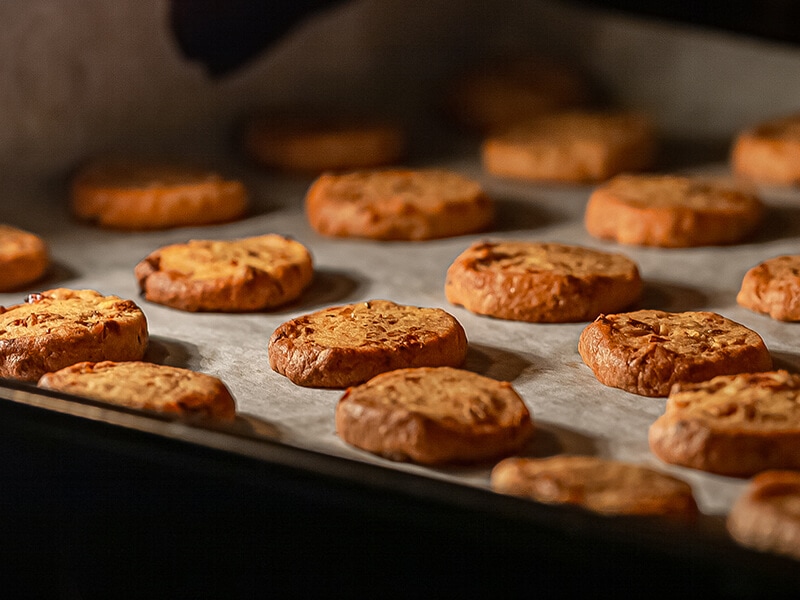
While using foil to line a baking sheet for various purposes, there are better liners than this for a cookie sheet pan.
Due to aluminum’s heat conductivity, the temperature will concentrate more on the cookie dough parts that come in contact with the foil than on the rest of your cookies.
It results in your pack of cookies baking unevenly, with the bottoms cooking faster than the tops. You may end up burning your baking base without cooking the entire cookie.
It results in your cookie batch being unevenly cooked. This means the bottom of the cookies will be brown or even burned, and the top will be undercooked. Alternatively, you can use baking parchment, a decent nonstick splatter, or a silicone baking rug to prevent this from happening.
Putting Foil In The Microwave
Only some people know that you should never microwave anything wrapped in foil (1). Specifically, the electric waves in a microwave create electric currents that flow through the metal.
Thick pieces of metal can withstand these currents, but what about thinner pieces like aluminum foil? Since aluminum foil is so lean, it cannot handle electrical currents and will heat up quickly. This will cause sparks and start to burn if they come in contact with another surface.
Use Foil To Store Food
In fact, you can store leftovers in the fridge within three to four days or in the freezer for roughly four months (2), but it is not good to use aluminum foil to store them.
Since foil is not airtight, some air will get in no matter how firmly you wrap it. This allows bacteria to develop more quickly. Storing leftovers in airtight containers or food storage bags is better than foil.
Line Your Stove With Foil
Most people prefer putting foil on the bottom of the stove to save time cleaning the stove. However, it is not an ideal method for cleaning up.
Lining your stove with foil can prevent heat from flowing thoroughly, reflect heat back onto the heaters, causing damage, and interfere with the fire if you’re cooking with gas.
Even Reynolds, one of the aluminum foil manufacturers, dissuades the practice, claiming that it may end up causing damage to your stove. Reynolds also recommends lining a sheet pan with foil and placing it on the lowest oven rack.
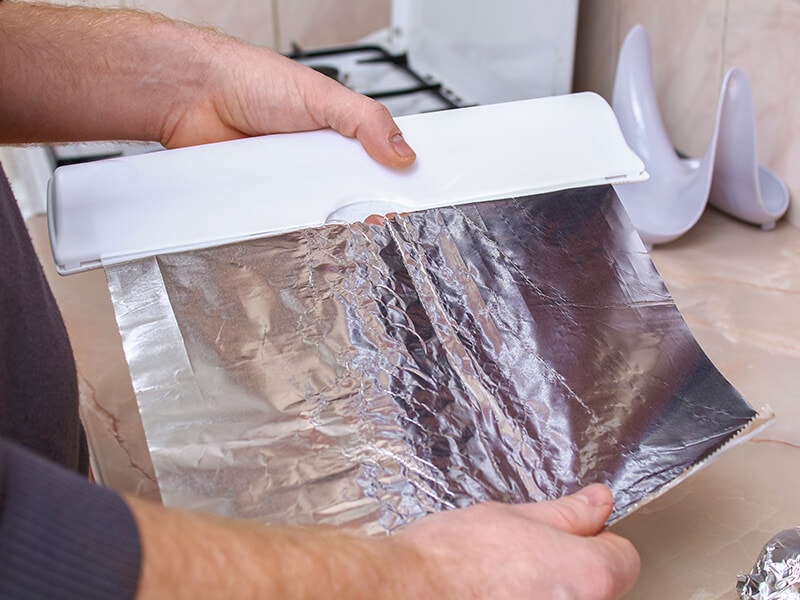
Use Foil For Acidic Foods
Acidic foods (such as tomatoes, marinara, and lemony fruits) can react with aluminum and adversely affect the foil within a few days. It would be best to use plastic wrap or glass containers for these foods.
Also, wrapping food in foil is only a short-term solution because foil-wrapped is not tightly sealed.
Does Tenting Food With Foil Help It Cook Faster?
Most believe using foil to cover the food will help it cook faster. However, is it true that foil allows you to cook food faster? Tenting your food with foil while it cooks will not speed up the process.
However, it will extend the cooking time, which produces a better result at the end of the cooking process. It will slow the cooking process because the heat does not directly affect the food.
Nonetheless, the aluminum foil will assist in spreading the heat more evenly, so it cooks on all sides of your food at the same speed. Although it will be slower with the “tent with foil” method, the result won’t let you down. Your dish will be tender and cooked more thoroughly.
What Can You Use If You Don’t Have Aluminum Foil?
No matter how good aluminum foil is, it is not the safest product for human health and the environment. Here are some useful alternatives that can help you prevent environmental pollution and be good for your health.
Cedar Paper
Cedar paper is made from cedar wood and is a perfect food wrap for grilling if you can’t get your hands on aluminum foil. Just soak the cedar paper in water for a couple of minutes, and you can wrap it around your food container before grilling.
When using cedar paper to prepare dishes, your food will have a lovely smoky flavor. Moreover, you can find cedar paper on meat and seafood counters at your local grocery or market.
Silicone Food Covers (Stretch Lids)
A silicone food cover or a stretch lid would be better if you don’t have aluminum foil. The silicone food cover can fit well in any shape of containers, such as cans, bowls, cups, or dishes.
You may even use clips to seal the edges to trap more steam during the cooking process. Furthermore, one unique thing about silicone food cover is that it is reusable and eco-friendly.
Silicone Baking Sheets Or Mats
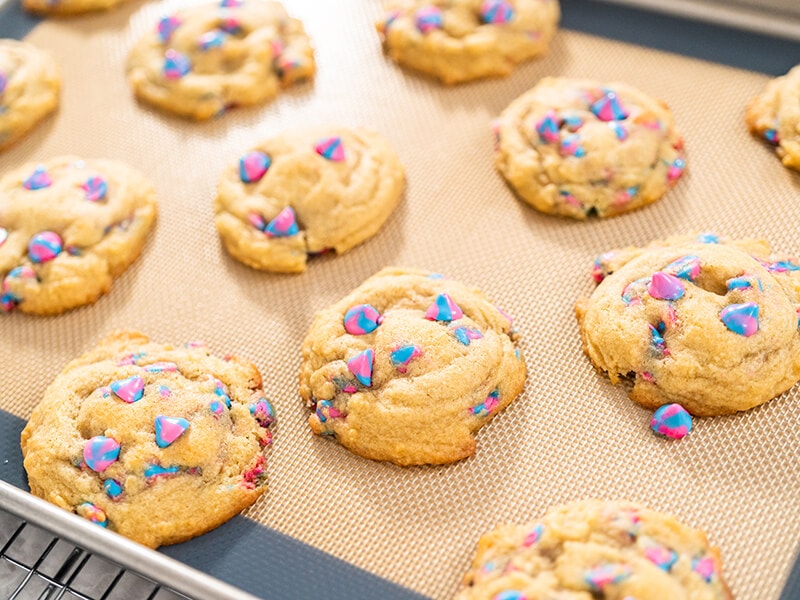
Silicone baking sheets are an ideal replacement when you don’t have aluminum foil. Silicone baking sheets or mats are excellent up-to-date materials used for baking.
They are much better than aluminum foil and parchment paper as they are thicker and reusable. Moreover, silicone baking sheets can prevent your food from sticking to the surface due to its non-stick nature.
The silicone baking sheet can handle temperatures of up to 482°F (250°C). One of the most important things is to pay attention to the “food grade” label when buying silicone-made products.
Parchment Paper
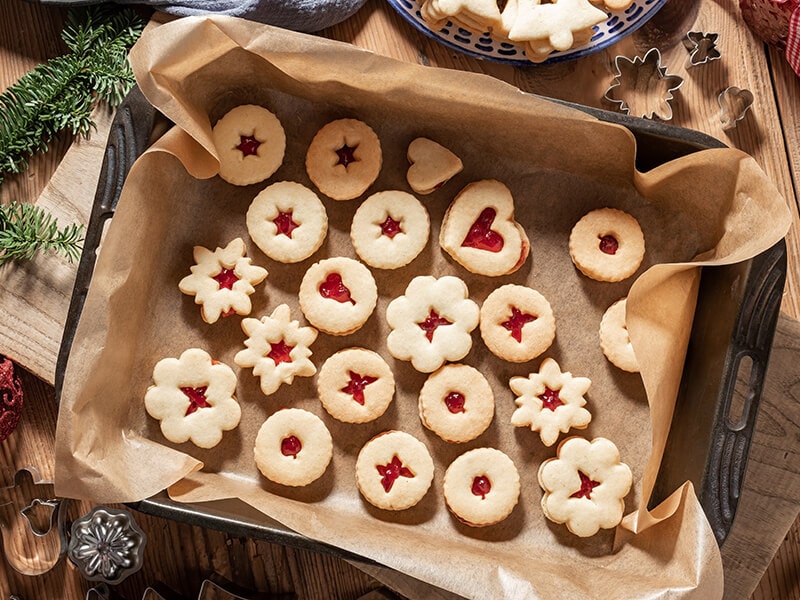
Parchment paper is one of the most suitable substitutions for aluminum foil for tenting food. You can use it instead of aluminum foil for several purposes.
The parchment paper can handle the heat of the oven, and it can help secure the food’s moisture when cooking. However, it won’t help spread the heat evenly like aluminum foil. However, it’s better than not having anything to lock in the moisture.
Is It Safe To Use Aluminium Foil For Packing Food?
Some studies indicate that tin foil can negatively affect people’s health if you have used it constantly due to its growth in aluminum in human bodies.
Aluminum containers, cooking equipment, and foil tend to leach aluminum into the food. While the amount of aluminum contact with you is safe, research has found higher levels of aluminum in individuals with Alzheimer’s disease.(3)
How Do You Tent Bread With Foil?
Besides the benefits mentioned above, people can also use aluminum foil for tenting bread. Specifically, the aluminum foil protects the loaf from over-browning. Thus, people need to attach the foil to the side so it doesn’t fall off during the cooking process.
Here are some tips you should take note of for tenting bread with foil.
- You should place the pan in the oven’s center rack. Be aware that the oven’s temperature may vary depending on your variety.
- Check your loaves for doneness about 10 – 20 minutes after baking. If you spot any brown spot or over-browning of the bread, tent the foil over the bread to prevent any extra burning and return the bread to the oven.
What Is The Purpose Of Tenting Meat?
The tenting process helps preserve the meat’s tenderness and prevent the juice from pouring out. In addition, the procedure also lets air circulate, helping the meat surface avoid being steamed by the hot vapor.
Once the internal temperature has reached its peak, tenting the meat with foil keeps it warm for a couple of minutes.
FAQs
Tenting with foil brings many significant benefits to your life. To help you know more about this method, I will provide you with the answer to several questions people frequently ask about it.
It’s Time To Practice Tenting With Foil
With the valuable information that I have covered above; I hope you can practice tenting with foil immediately. From now on, cooling will no longer be a big challenge. Besides using foil for cooking, you can also use it for various purposes.
Furthermore, it’s always fun to try out something new in your kitchen; and tenting with foil is a great way to elevate your cooking. Now, do not hesitate to comment and share this helpful article with others to spread the good things more widely.
References
- Schmutz, O.A.P. et al. (2011) Microwave Food Safety, Home & Garden Information Center | Clemson University, South Carolina.
- ASKUSDA.
- Thought, S.F.A.- F.for (no date) Is it safe to use aluminum foil as a food wrapper?, Food for Thought.

